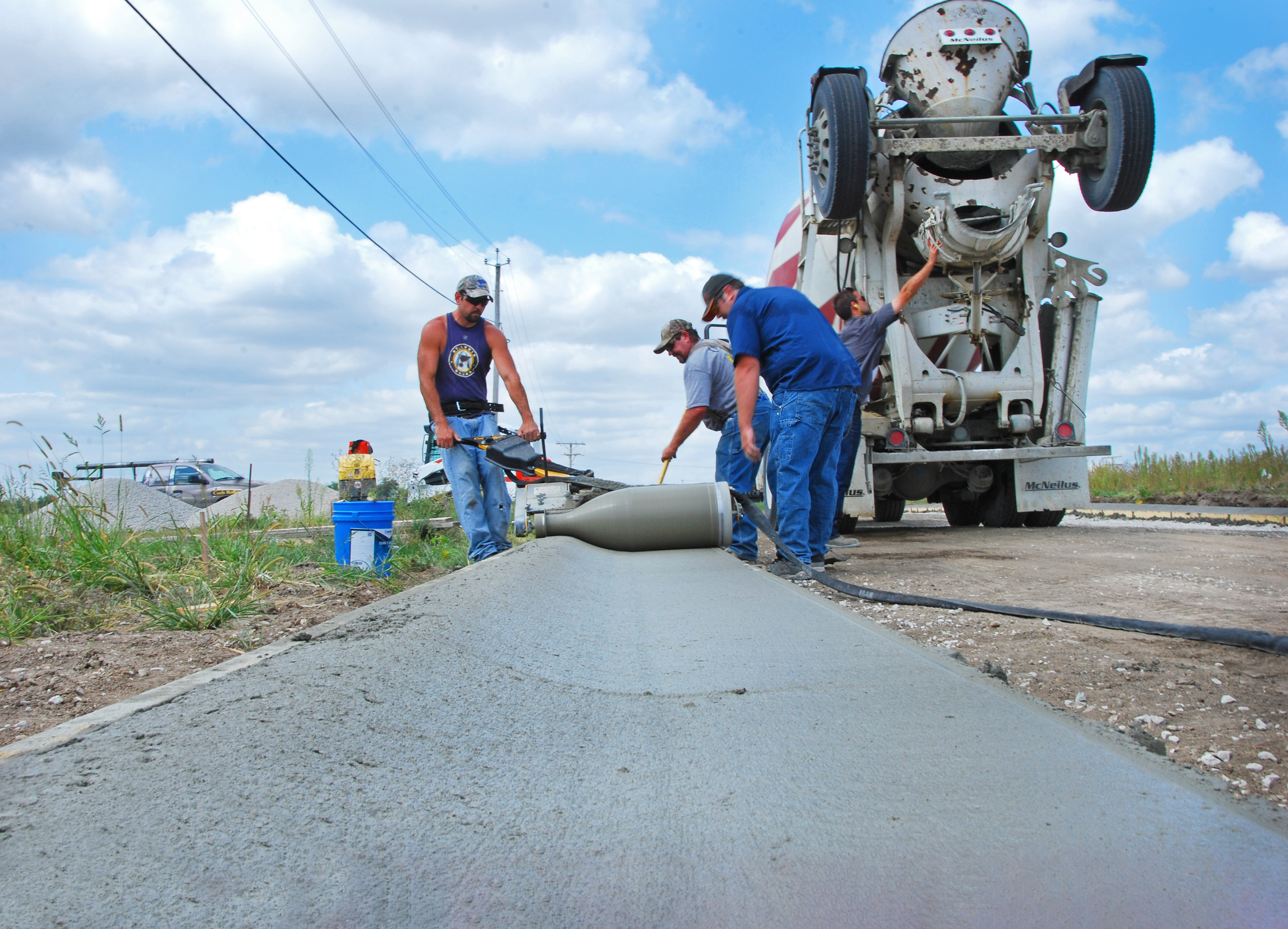If you’re eager to expand the range of projects your concrete crew takes on, you might have considered diving into the world of curb and gutter placement. Sure, some might call it “dirty work,” taking more time and effort than working on those sleek new restaurant sidewalks. But there’s a reason curb and gutter is just as popular today with a wider range of tools to accomplish it, making it not only possible but profitable for any crew.
Historically this job has been a true art form, with skilled workers spending their days meticulously crafting the perfect curb using basic tools like boards or guides to make sure their flow lines are straight and the curb height and radiuses are as true as one can get by hand. If you have never watched this process, we couldn’t suggest it more. Not only is the technical skill amazing and the work hypnotizing, but it also makes you appreciate how curb and gutter has been done since around the early 19th century.

Before the concrete arrives and your workers take the time to shape it themselves, there is still other work to be done in preparation. First you will want to prepare the area that the curb and gutter is going in, which can include excavation of pre-existing concrete or the use of a compactor to solidify the earth below. You will also need to decide what type of forms you want to use, i.e wood, steel, poly, or masonite. Wood tends to be the cheapest option, so it’s also the most popular. Then a back form, front form and sometimes a face form are set up, staked in and leveled, with most crews placing rock or sand between the forms to ensure the concrete is even with the bottom.
After these steps have been completed, you can finally look at adding concrete so you can proceed to shaping, finishing and brooming. It is also worth noting here that even something as simple as brooming can have specific instructions depending on traffic speed or direction.

With this information you might be wondering how you can save money from subbing the work out while also not taking extra days of labor to complete your curb and gutter journey. The modern day solution suggesters will tend to tell you to invest in some kind of curb and gutter shaping machine. In today’s world we are gaining more options that get you away from the standard back-breaking labor of yester-year, while also allowing you to place more in a shorter amount of time.
For your professional crews that live and breathe curb and gutter, a big name (and big size) slipform paver tends to be the quick go-to. These larger machines act as an extruder to create your curb and gutter shape, while also finishing the product along the way if a trimmer is included. They also have a built in hopper and belt system to consistently deliver concrete into the extruder without needing to physically work around a concrete truck. Companies such as GOMACO have even taken this slipform type to a whole new level by having 3D guidance and smart sensors that remove the need for the machine to be string-guided.
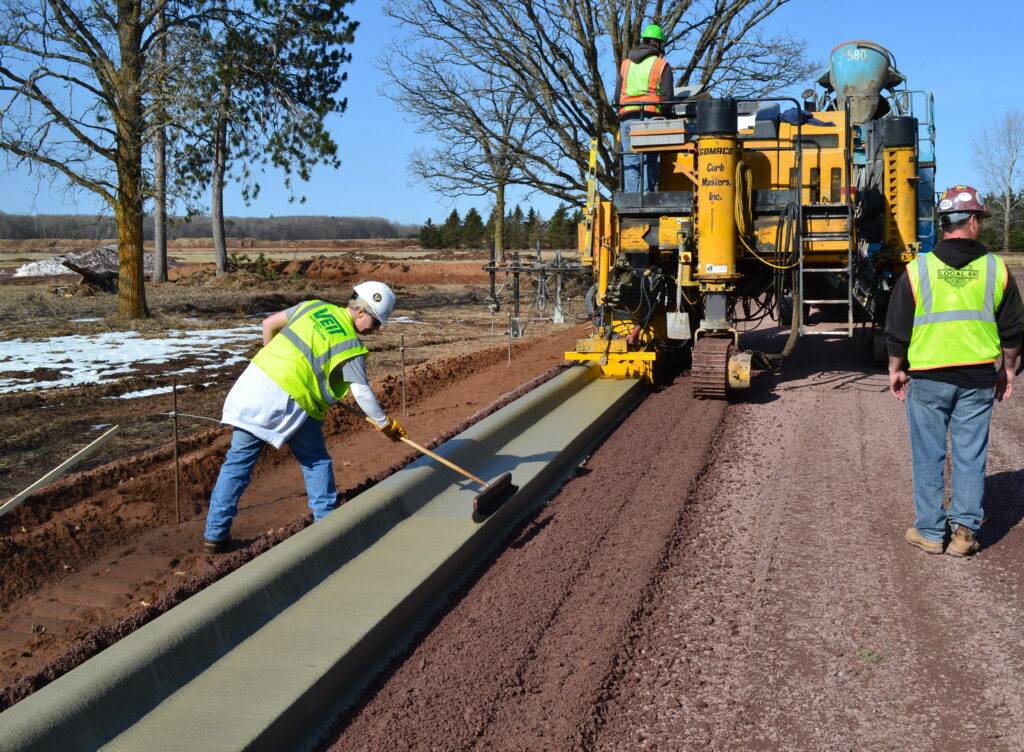

So what is the downside to using the slipform paver giants? Size for one. These machines can’t be tossed into the back of your pickup and then pulled back out with ease. You’ll also need someone who is adept with technology to run them, possibly even attending programs such as GOMACO University to attain the knowledge needed to properly run and maintain the machine. Programs like this are not a bad thing if you choose to move forward with the investment, as your standard cost is around $80,000 for a smaller, basic machine or around $500,000 and up for a more top-of-the-line, bells-and-whistles option.
When looking at a smaller professional crew that jumps between different job types, then the bigger slipform pavers are most likely not the right solution from both a cost-effective and knowledge based standpoint. If they stick with a solid amount of curb and gutter work and are still looking for a mechanical solution, these crews will most likely look more at using a smaller slipform paver like those from Curb Fox, MBW or Miller Curber. All three will be more affordable than a big slipform, while still delivering similar results with a lower learning curve.


Adjusting to one of these smaller and typically lower-cost slipforms means there will be a little more input work than if using one of the big boys. The Curb Fox, MBW, and Miller Curber are still mainly based on the string system where you have to set up a string as a guide for the machine to stay on track. They also can’t be placed in a truck bed, but can usually be pulled behind a truck or transported with a trailer. Labor-wise the MBW’s will need an operator walking with the machine as it places the concrete, while the Miller Curbers require the operator to pull the machine with the assistance of an engine. These can be minor payoffs for the company that still wants to stay upright while letting a machine do the vast majority of the work.
Now what about your smaller seasonal crews or ones who either tend to sub out curb and gutter or only do a certain amount per year? Most of these crews who are more limited tend to either continue concrete placement by hand, rent a machine, or choose to invest in non-slipform pavers like the Curb Roller CM4000. When going with a machine like the Curb Roller you gain the benefits of fitting your machine in the back of a truck, having a consistent flowline, and being able to choose from an array of profiles including custom. It is also small enough to fit in those tight spots that the larger slipforms may not be able to get to, and has a quick ROI in comparison. The Curb Roller, as well as the aforementioned slipform pavers, also have the added benefit of eliminating the need for face forms when trying to place curb and gutter.
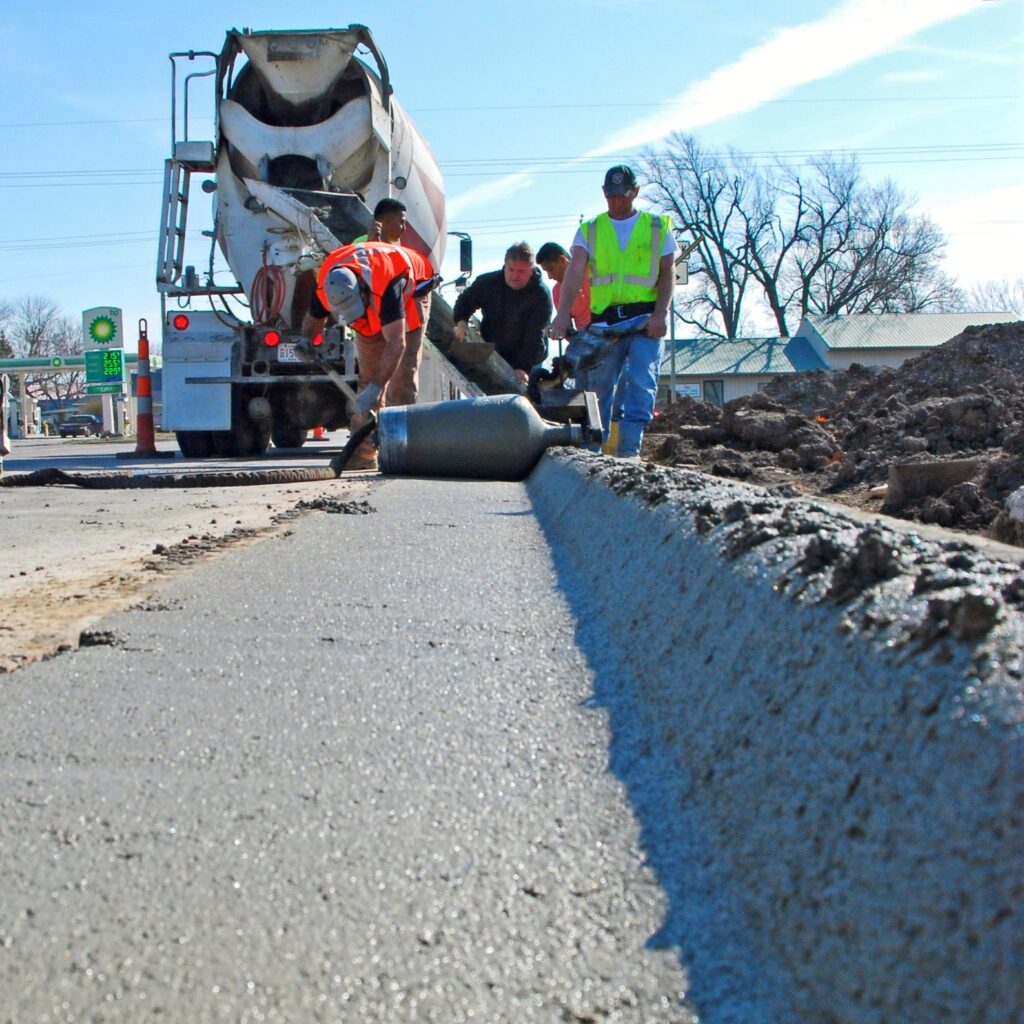
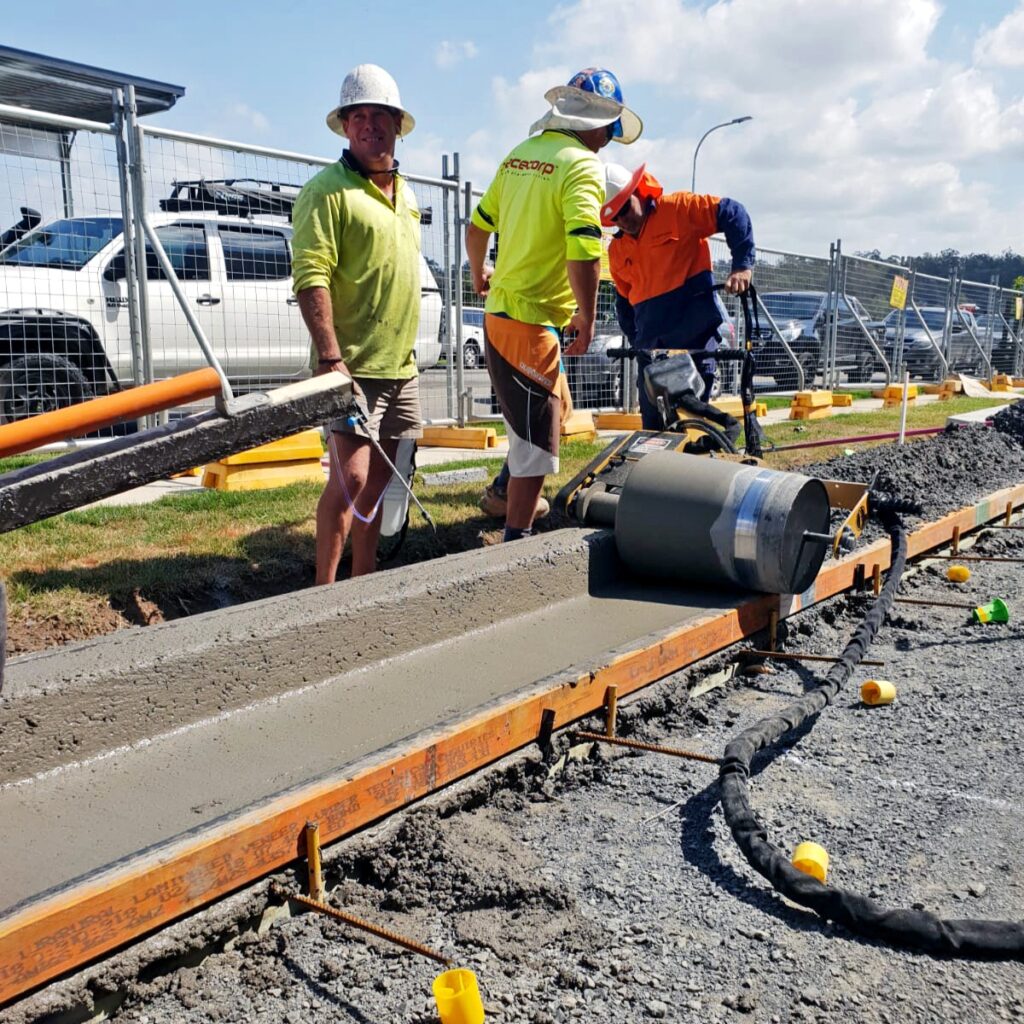
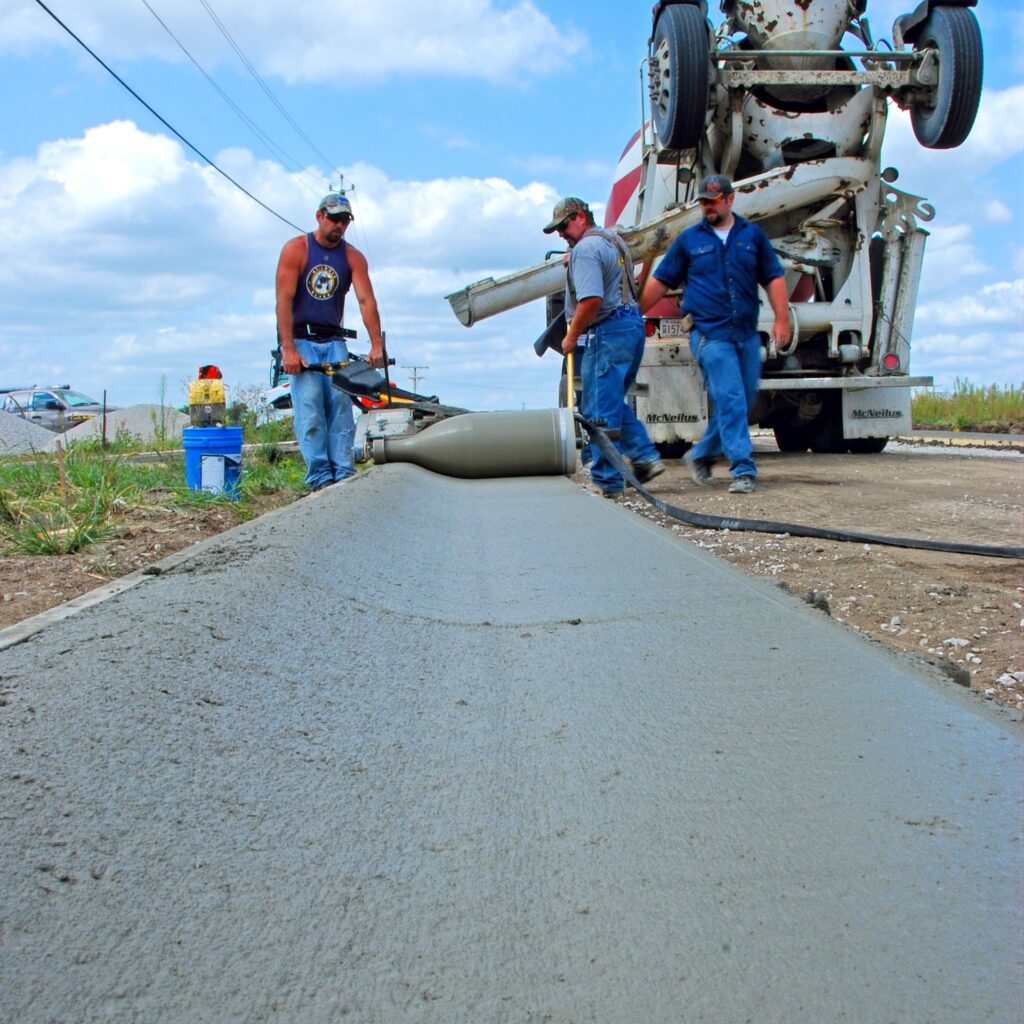
However, as you’ve probably guessed machines like the Curb Roller do require a little bit more physical effort over the larger pavers even though you are still in a standing position. With the Curb Roller you are still the one pulling the machine, but by using the operators belt the weight is transferred more to your hips to assist with weight transfer. This method also brings back the requirement of a back form for the guide ring to move against, however the front form can at least be eliminated if the machine will be running on existing concrete. There is also some finishing that may need to be done depending on the concrete mix used.
At the end of the day, it all really boils down to personal preference and money. You can choose to do it all by hand, sub it out and have someone else do it, or you could choose to have machines do the gamut. The only constant is that whether you have a 3-man crew or a crew of 100 there will always be a need for curb and gutter to be done, and preferably done well.



